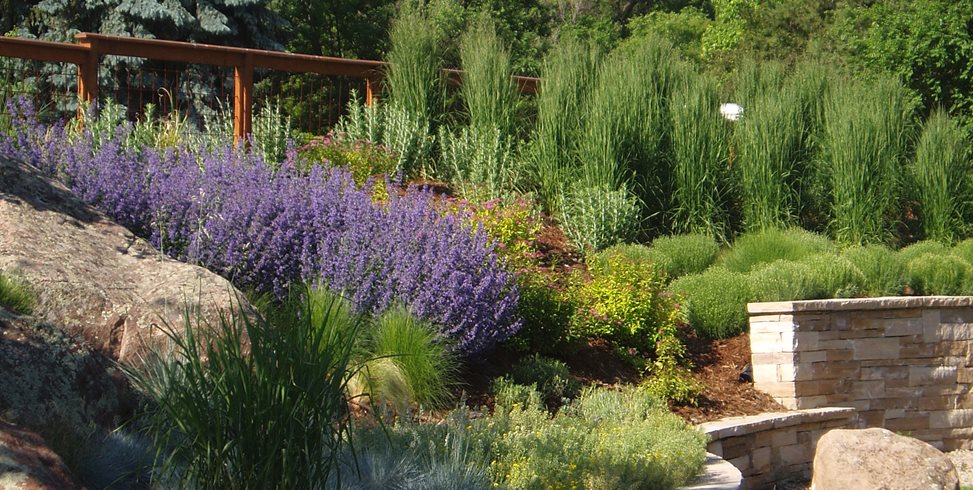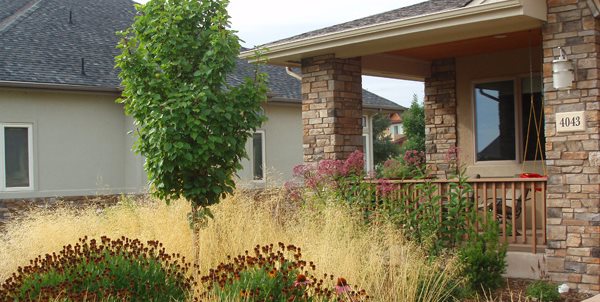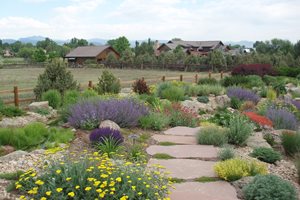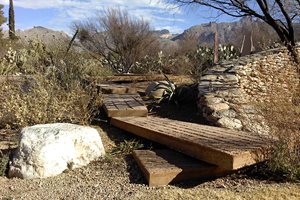Dos and Don'ts of Xeriscaping
Professional tips for designing a xeriscaped gardenXeriscaping is about using as little supplemental water as possible while still enjoying the lushness and vivid colors of a healthy landscape. "Early xeriscapes had an overabundance of rock mulches, with too few plants and lots of old wagon wheels/ driftwood chunks/ nerdy garden art," says Mike Woods of J&S Landscape in Longmont, CO. But designers nowadays can create fabulous low-water gardens in just about any style, so your xeriscape needn't look like a moonscape. Here, pros share their tips for creating a beautiful xeric landscape.
Xeriscaping Dos:
Do use your imagination.
"Xeriscaping can adapt to any style," says Elizabeth Przygoda-Montgomery of Boxhill Landscape Design in Tucson, AZ. "You can be French country, Mrs. Modern, or go in for a Tuscan theme," she says. "Xeriscaping doesn't mean zero."Do use perennial flowers in close groupings.
Woods points out that using drought-tolerant flowering perennials en masse "gives a bold punch of flower power" to a xeric garden. Besides the visual advantage, having a continuous cover of foliage keeps plant roots cooler and can reduce the need for water.Do install drip irrigation.
While you may only turn it on periodically once the plants are established, those first few years are critical in developing the deep root system that allows plants to thrive with less water and care.Do consider seasonal interest.
By choosing plants carefully, you can enjoy the beautiful effect of dried bouquets billowing throughout the garden in autumn and winter. "Ornamental grasses, Russian sage, Autumn Joy Sedum and others stand tall in autumn and even look good when covered in snow," says Woods.Do group plants by their watering needs.
If you want a few water-hungry plants such as hybrid tea roses or Hydrangeas, put them in the same section of the garden so they can be irrigated separately from your xeric plants. This way, each plant gets exactly what it needs.Do check into rebates for getting rid of lawn or installing shade trees.
"Here in Arizona, the electric company will provide you with shade trees to reduce energy use," says Przygoda-Montgomery. In Orange County, CA where Nayeri lives, there are programs that reimburse homeowners for every square foot of lawn removed.
Xeriscaping Don’ts:
Don't overplant woody shrubs.
Woody shrubs can develop a crooked or irregular growth habit when crowded. Plus, allowing enough room for air to flow between shrubs and trees prevents disease and allows you to appreciate the natural form of these plants.Don't think you're stuck with a colorless vista of cactus.
"A lot of native California plants look green year-round," says Rama Nayeri of Creations Landscape Design in Tustin, CA. "I try to time the bloom cycles so every season has plenty of color."Don't be afraid to keep a small patch of lawn.
While lawns are the most water hungry part of any landscape, many people with children or pets opt for a small lawn. "I had one client with a chocolate lab and a five-year-old, so we put in a small patch of turf for them to play on," says Nayeri. Ask your landscaper about alternative varieties of turf for your region that use less water.Don't bother starting with large specimens.
Larger plants need more water to get established, and after the first year, the same plant started from a 1-gallon pot and a 5-gallon pot will have grown to an equivalent size. Focal point shrubs and trees are the exception; it can take many years for them to develop a beautiful form, so it's worth splurging on those.Don't be too quick to cut plants back in winter.
Many plants have a sculptural shape that's interesting even after they go brown. "I discourage wholesale cutbacks in the winter, and try to interest people in getting to know the winter look of these plants," says Woods.Don't skimp on your soil prep.
"You have one good shot at improving the soil before you cover it up with landscape fabric or some type of mulch," says Woods. Compost helps the soil hold moisture, which means you'll need to irrigate just a little bit less. In addition, with careful grading you can direct natural rainfall to areas of the landscape where plants can benefit.

 Backyards
Backyards
 Front Yards
Front Yards







